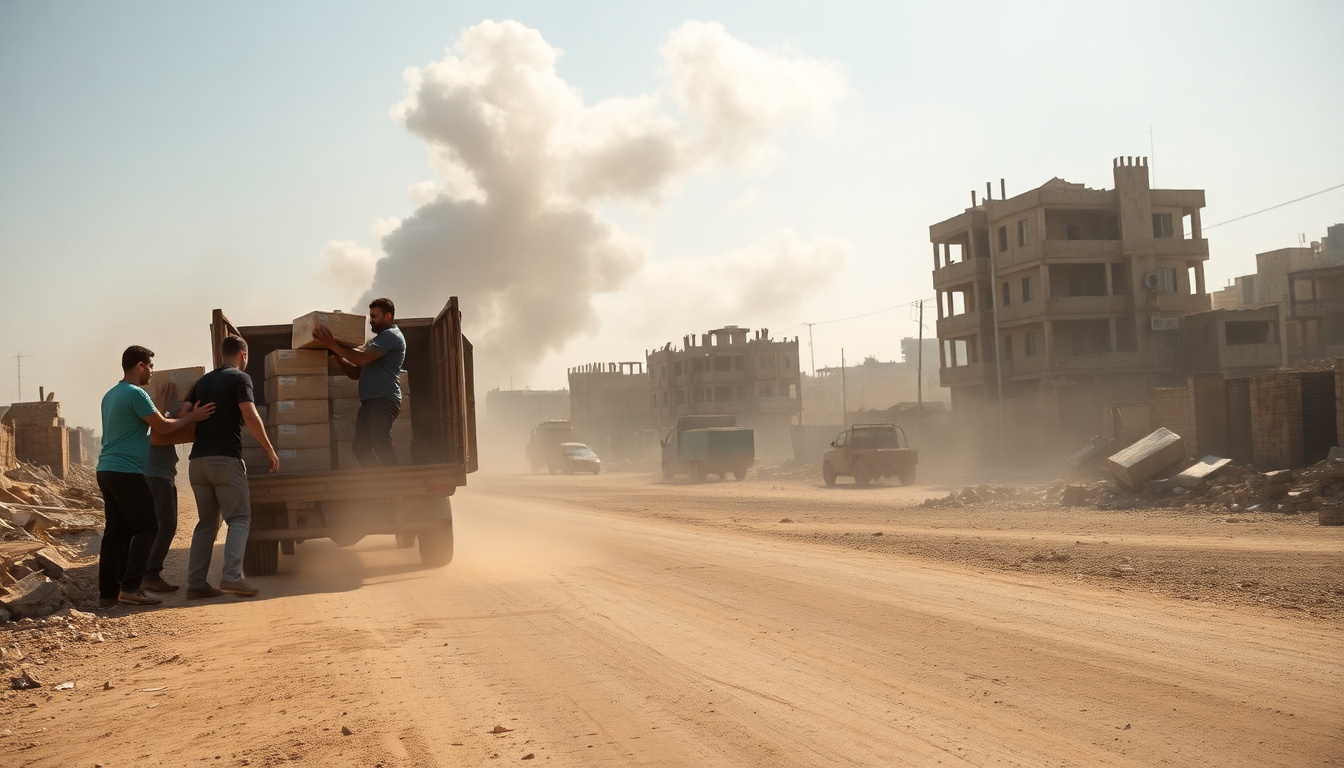Table of Contents
The ongoing conflict in the Gaza Strip has recently intensified, grabbing international headlines and raising urgent concerns about the humanitarian situation on the ground. With the Israeli military ramping up operations against Hamas strongholds, we’re witnessing a pivotal change in strategy that carries implications far beyond the battlefield.
But what’s really happening behind the scenes? Let’s break down the military developments, the humanitarian crises, and the varied reactions from key players in this complex situation.
The Military Escalation and Its Implications
In the early hours of Thursday, reports began to surface about Israel launching a series of airstrikes on Gaza City and its nearby areas.
This offensive is a direct result of a newly approved military plan aimed at dismantling the remaining Hamas strongholds in the region. The Israeli defense ministry’s decision to mobilize around 60,000 reservists underscores a serious commitment to this campaign, sparking fears that the humanitarian situation in Gaza could spiral even further out of control.
The Israeli military has confirmed that operations are already underway, with troops strategically positioned on the outskirts of Gaza City. This shift in tactics reflects Israel’s determination to reclaim control over a territory that has been marred by conflict for decades.
Military analysts suggest that this intensified offensive is not just about neutralizing Hamas; it also sends a clear message to other regional adversaries. But is this approach sustainable?
Interestingly, this escalation coincides with ongoing diplomatic efforts aimed at brokering peace.
Hamas has openly condemned the Israeli offensive, labeling it a “blatant disregard” for these mediation attempts and warning that such actions could derail the latest truce proposals. It seems we’re stuck in a cycle of violence that complicates an already shaky peace process.
What will it take to break this cycle?
The Humanitarian Crisis in Gaza
The humanitarian fallout from this military escalation is nothing short of catastrophic. Gaza has been grappling with severe shortages of medical supplies, food, and clean water, and the recent bombardments have only worsened these dire conditions. The civilian casualties and displacement continue to rise, leaving residents in a state of fear and uncertainty.
Reports from Gaza City paint a grim picture, as relentless bombardments create an atmosphere of dread. Humanitarian organizations are raising alarms, warning that without immediate intervention, the situation could spiral into a disaster with long-lasting repercussions for the civilian population. The international community is watching closely, yet responses have varied widely—some nations call for restraint while others firmly back Israel’s right to defend itself. How can we expect any meaningful change in this environment?
As the conflict escalates, the specter of a humanitarian disaster looms larger. International aid efforts are being severely hindered by ongoing violence, complicating the delivery of essential services to those in desperate need. This scenario highlights the urgent necessity for a comprehensive approach that addresses both immediate and long-term needs of the affected population. How do we balance military action with humanitarian relief?
Geopolitical Ramifications
The recent military actions in Gaza resonate beyond its borders, influencing not just Israeli-Palestinian relations but also the dynamics of regional politics. As Israel deepens its military commitment, neighboring countries and non-state actors are keeping a close eye on the situation, which could lead to heightened tensions in an already volatile area.
Analysts warn that this escalation might provoke responses from other groups sympathetic to Hamas, potentially triggering a wider conflict. Moreover, the international community’s reaction will be crucial in shaping the future landscape of the region. Navigating the complexities of national interests and historical grievances will be key to any diplomatic efforts aimed at de-escalation. What role can the global community play in this intricate puzzle?
In conclusion, the evolving situation in Gaza highlights the delicate balance between military actions and humanitarian needs. As the conflict continues to unfold, the importance of informed analysis and proactive engagement from the international community becomes increasingly critical to prevent further escalation and work towards a sustainable resolution. Can we find a path forward that prioritizes peace?





